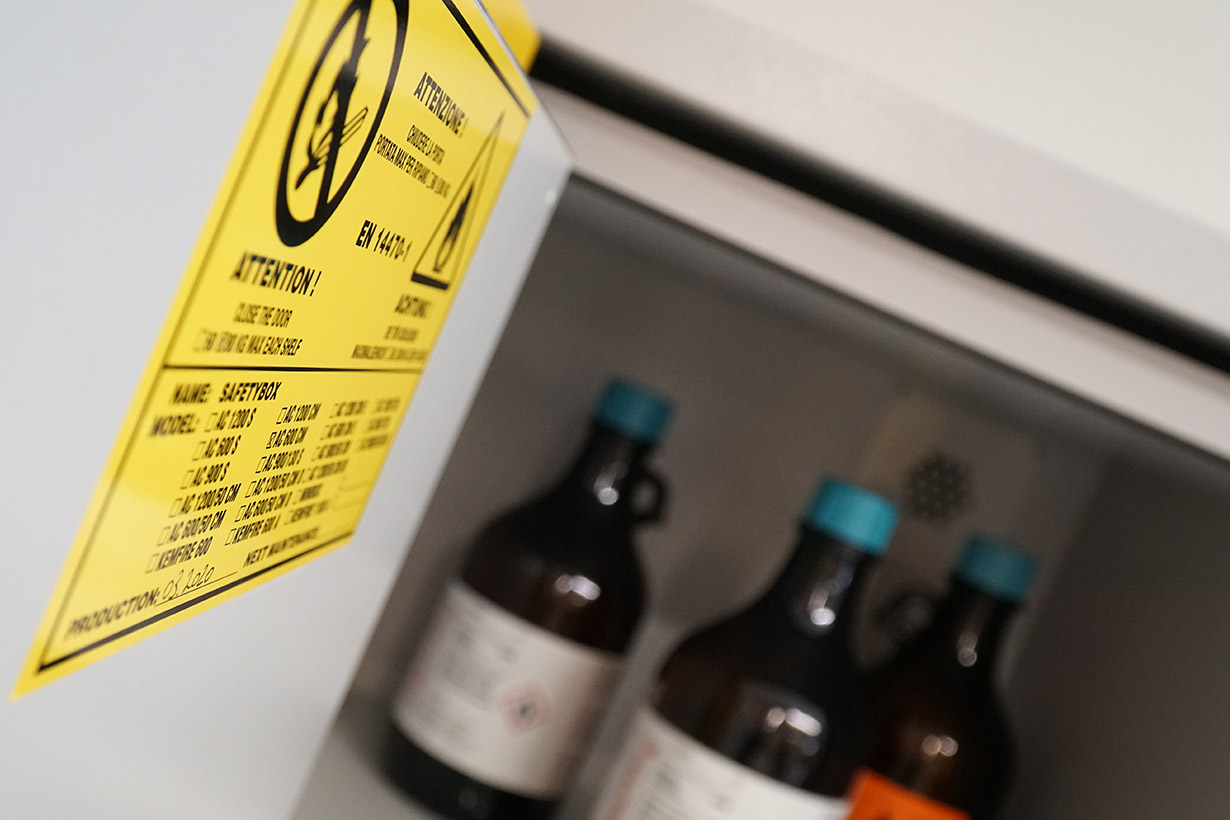Construction and flammable materials
In the construction sector, attention to hazardous substances, and to the risks relative to the possibility of fire and explosion, is an essential topic.
Storage of flammable gases and gas cylinders, the acetylene risk in construction sites, storage of materials and waste management: let’s take a look at risks on the construction site.
Safety in the storage of flammable liquids and gas cylinders
The document “Fire prevention on construction sites” drafted by the Confederation of Fire Protection Association Europe, has many specific guidelines on storage of flammable liquids and gas cylinders.
The prime rule is that flammable liquids, compressed gases and LPG must not be stored together. They should preferably be safely stored in outdoor fenced off areas, protected against sunlight and away from hazardous external agents.
Signs are of the utmost importance. They must be visible and explanatory, always displayed at the entrance to the stores.
The type of electrical installation in the stores must also be considered. It must be suitable for installation in explosion-risk environments, with an appropriate amount of fire extinguishers available at the entrance to the storage areas.
The following are some specific guidelines regarding flammable liquids:
- Stores of liquid fuels must be situated on an impervious base and surrounded by a bund sufficient to contain the maximum contents of the largest drum stored, plus 10 per cent. The bund must not be allowed to accumulate water or waste material.
- Where it is necessary to store flammable liquids inside a building under construction or renovation, the quantity so stored must be the minimum necessary and no more than a day’s supply.
- The containers must be kept in a store, cupboard or bin which is of fire resistant construction.
- Ideally, storage areas should be sited at least 10 metres from permanent and temporary buildings and 20 metres from structures fabricated predominantly from combustible materials. Containers must not be stored within 4 metres of any building or boundary fence unless the boundary is a wall with at least 30 minutes fire resistance and at least 2 metres high. In the latter case, containers and drums should be at least 1 metre below the top of the wall.
Here are some guidelines on LPG cylinders:
- The floors of LPG and other cylinder stores should be paved or compacted level with a suitable hard standing provided for the delivery and dispatch of cylinders.
- The area must be kept clear of all combustible materials, weeds and rubbish.
- The provision of automatic flammable gas detection equipment should be considered for enclosed storage locations.
- All permanent LPG and natural gas supplies and their connections to gas/LPG fuelled appliances must be installed by a competent gas fitter.
- Gas supply to appliances should be by fixed piping or armoured flexible tubing.
- Gas cylinders should be located outside buildings and be secured and protected from unauthorised interference.
- Gas appliances must be fitted with control taps.
The acetylene risk in construction sites
“Fire prevention on construction sites” also addresses acetylene, a flammable gas which at elevated temperatures and pressures or following impact of the cylinder constitutes a serious fire hazard.
The use of acetylene on construction sites should therefore be eliminated wherever possible and alternative methods of cutting and welding be adopted.
Where the use of the gas is unavoidable:
- Its presence must be minimised.
- Spare cylinders must not be kept on site.
- Acetylene cylinders should be removed from the workplace and returned to the storage area as soon as the period of work has been completed. The cylinders should be removed from the site as soon as their use is complete.
Safety in the storage of materials
Lastly we take some guidelines from the document about the materials in stores. Combustible materials should be stored outside the building under construction or undergoing refurbishment, and should not be so close to it that fire is able to spread from the materials to the building. Where combustible construction materials are stored inside the building, the area used for storage should:
Have controlled access;
- Not be in an area where hot work is being carried out;
- Either be within the area covered by the site fire detection system or be included on the route of regular fire checks;
- Have fire fighting equipment located close by”.
- “Protective covering materials should be available to cover combustible construction materials during storage”. “Protective covering materials should not contribute to the fire load or the potential for fire growth and spread”.

